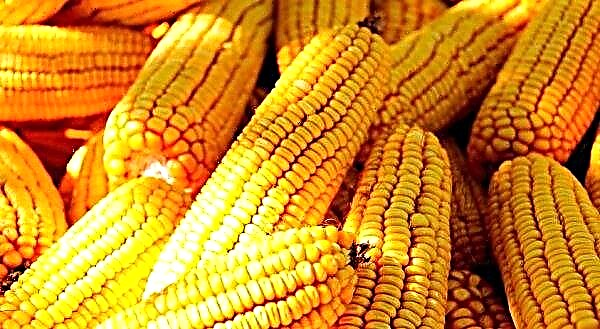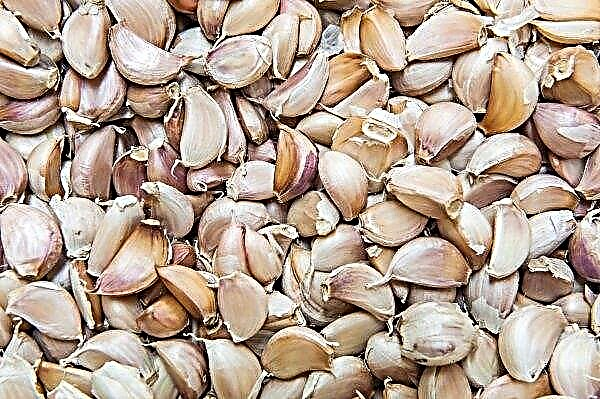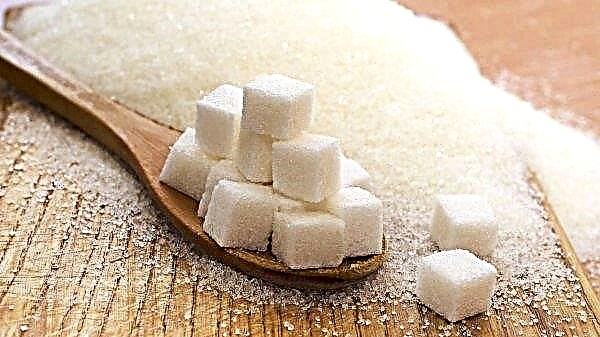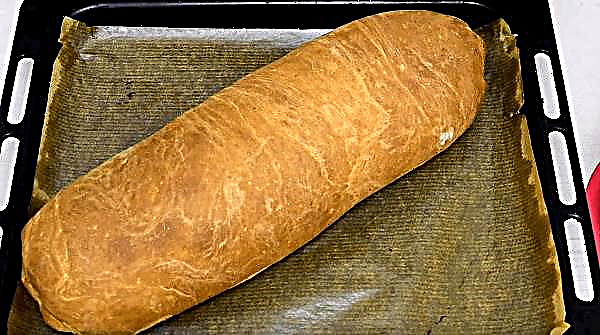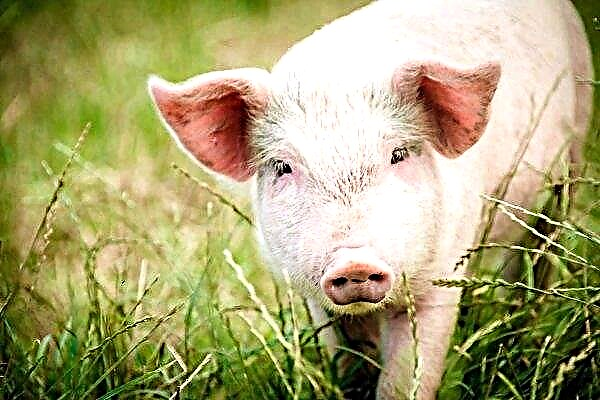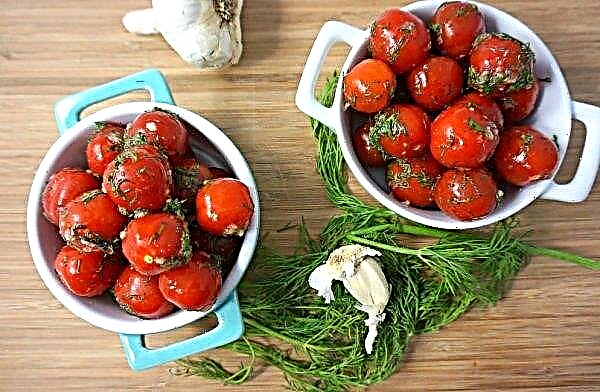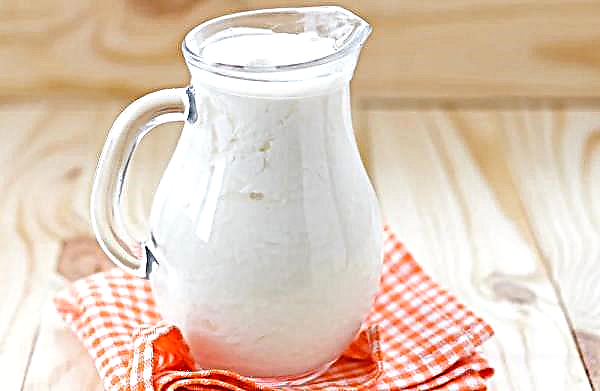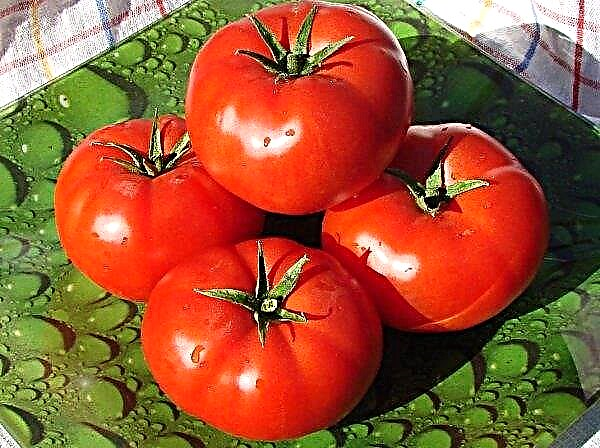Perhaps the most popular and proven way of preserving cabbage is its fermentation. In this form, the vegetable is even more useful (due to the formation of lactic acid) than in fresh, preserves all vitamins. But when the housewife needs only fresh cabbage, but is not at hand, a pre-prepared freeze will come to the rescue. Read about how to make such a blank.
Did you know? In ancient Egypt, cabbage was grown for 1,5 thousand years BC. e. At the turn of the III–IV centuries BC the first mention of it appeared in ancient Greek sources, a little later in Roman. The ancestors of the Slavs learned about the vegetable from the Greek colonists inhabiting the Northern Black Sea region, and already in the 9th century, they began to grow culture on the territory of Russia.
Frozen White Cabbage
Before harvesting vegetables for future use in this way, you should be aware of the advantages and disadvantages of freezing in order to decide whether it suits you.
Pros
- Advantages of storing cabbage in a frozen state:
- for emergency cases in the refrigerator there is always a stock of one of the most popular vegetable crops;
- useful ingredients, vitamins and minerals are preserved in the composition in an unchanged state;
- the semi-finished product has a long shelf life;
- if necessary, you can quickly defrost;
- the possibility of instant (without defrosting) application in cooking.
Minuses
- Qualities that can spoil the impression of eating a semi-finished product:
- after defrosting becomes soft, loses a characteristic crunch;
- not suitable for eating raw (in salads);
- It looks worse than the usual fresh cabbage;
- Storage requires a large volume of the freezer.
Important! There is an opinion that before freezing cabbage, it should be blanched (doused with boiling water or steam). This procedure is performed in order to destroy the harmful enzymes that eventually form in the leaves.
Freezing rules
Having decided to resort to the method, you should know how to freeze the vegetable properly, in order to maximize the preservation of its useful qualities and appearance.
Freeze preparation
To get a good frozen semi-finished product, you should start by choosing a quality source material, and follow some simple rules:
- To begin with, the most suitable heads of cabbage should be selected: without external damage, round, slightly elongated or flattened, having a dense structure.
- Inspect for signs of decay and the presence of insects (their traces of life).
- Remove outer leaves.
- Rinse the heads with tap water.
- Wipe thoroughly with a thick soft cloth and allow to dry.
Temperature
The correct storage temperature of frozen cabbage in any form is up to –18 ° С. This is a typical temperature in freezing compartments of modern household refrigerators. If there are three drawers in the freezer, two lower ones are suitable for freezing. At a temperature of 0 ...– 8 ° C, the semi-finished product is stored for no more than 90 days.
Shelf life
If the vegetable is frozen in accordance with the technology, while you initially chose high-quality raw materials, it can be stored for up to 300 days. That is, in the event that you put the product in the freezer in October, you need to use it until mid-summer.
Important! Re-thawed semi-finished product is not subjected to freezing. In this case, you will get an ice mass devoid of useful qualities.
And by this time, early cabbage already appears, so that with a sufficient volume of the freezer, you can stock up on the semi-finished product for the whole season.
Freezing methods
There are 3 main methods, which we will discuss later.
Whole head of cabbage
Suitable for preparing dishes using whole leaves or for shredding after defrosting.
The procedure for preparing a vegetable for freezing in this way is simple:
- Remove stump and outer leaves.
- Rinse the remaining head out, wipe and dry.
- Put the prepared head in a bag or wrap it in foil and place in the freezer.
Leaves
Cabbage prepared in this way is used to prepare dishes where whole leaves are used.
The procedure is as follows:
- Remove from the head the outer leaves and the stalk, rinse.
- Place the resulting forks in boiling water for 2–4 minutes, depending on the size of the head.
- Disassemble the foliage and put it in bags.
- Put in the freezer.

Chopped
For the preparation of soups and stews, semi-finished products can already be prepared in shredded form.
Procedure:
- Rinse the cabbage, remove the outer layer of leaves and dry.
- Chop and place in plastic bags (containers).
- Put in the freezer.
The method has a feature: chopped cabbage can be combined with other vegetables. For example, a combination with bell pepper is an excellent semi-finished product for winter borsch. In addition, retail chains rarely sell ready-made mixes of frozen vegetables with white cabbage, more typically a combination of other vegetables - with cauliflower or Brussels sprouts.
Location and packaging
Before the procedure, it is necessary to prepare the packaging and storage location. As packaging suitable plastic bags or cling film. You can also use plastic containers, but they will take up more space. As for the storage location, there are only two options: a refrigerator freezer or a household freezer.
What to cook from frozen white cabbage?
Frozen cabbage means cooking dishes with heat treatment, not suitable for salads and pickling or pickling. It can be boiled, stewed, baked.
For borsch and soups
For the preparation of borsch, soups, solyanka, cabbage, cabbage, chopped before freezing, is suitable. Such a semi-finished product before laying in boiling water or broth, you do not need to defrost.
For stuffed cabbage
A vegetable frozen with a whole head of cabbage or single leaves is suitable for making cabbage rolls. There is no need to pre-put the leaves in boiling water to obtain the necessary softness.
Did you know? Cabbage contains methionine (vitamin U), an essential amino acid necessary for the functioning of the digestive tract, liver, and lowering cholesterol.
Enough defrosting is enough, after which the leaves are ready for wrapping minced meat in them (placing the semi-finished product from the freezer in the refrigerator, where it thaws in a suitable temperature regime).
For pies
Shredded cake mix can be used as a filling for pies. Preliminary, the vegetable should be stewed. Of course, a frozen product should not be compared with fresh. If in terms of useful qualities it is not much inferior, in the organoleptic component it loses. Nevertheless, in the preparation of some dishes, frozen cabbage may well replace fresh cabbage, so we recommend making such a harvest and enjoying your favorite and healthy vegetable in the winter season.
Of course, a frozen product should not be compared with fresh. If in terms of useful qualities it is not much inferior, in the organoleptic component it loses. Nevertheless, in the preparation of some dishes, frozen cabbage may well replace fresh cabbage, so we recommend making such a harvest and enjoying your favorite and healthy vegetable in the winter season.

